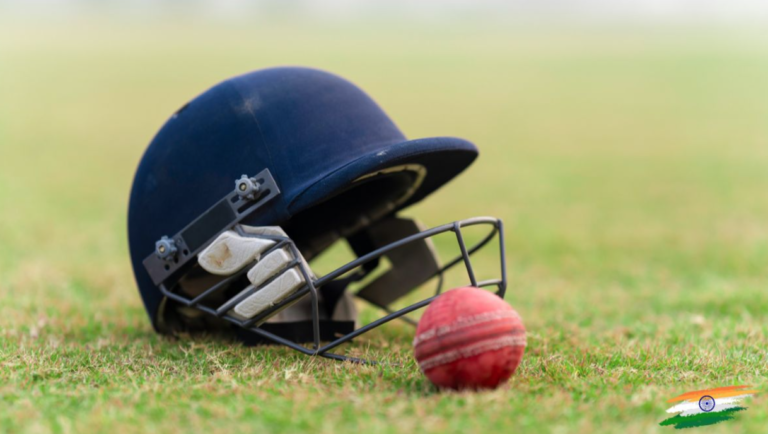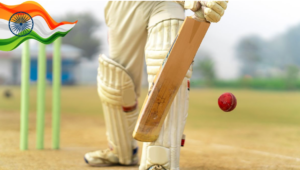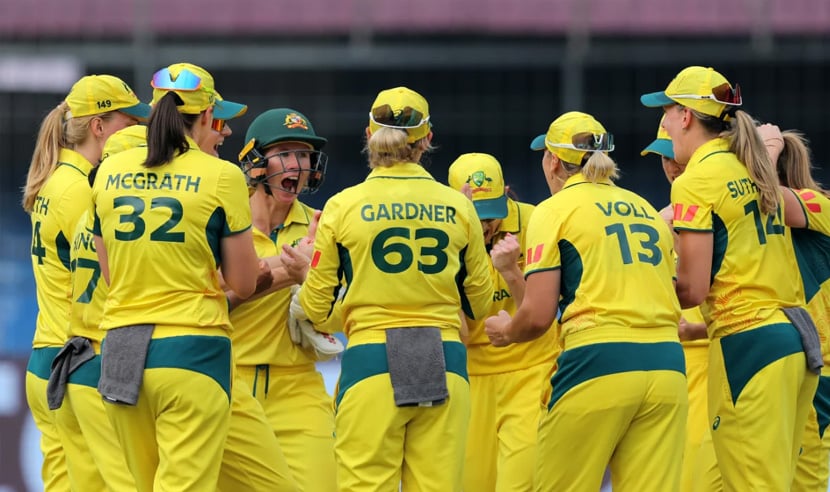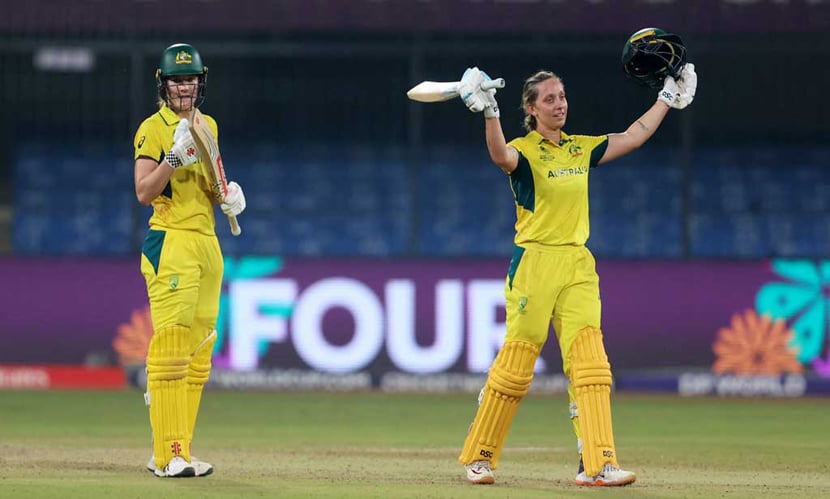Cricket is by far the most popular sport in India. Both young and old love it. Cricket’s journey in India is one of passion, colonial influence, and cultural transformation. Introduced by British sailors in the 18th century, the sport gradually became India’s most important game. In a country divided along the lines of culture, religion, and ethnicity, Cricket has become the binding agent.
From the first India team’s 1911 English tour to modern IPL spectacles and international successes in ICC competitions, cricket in India has evolved dramatically, reflecting the nation’s unique spirit and growing global influence in the sport. Read on to get a comprehensive insight into India’s cricket history.
Historical roots of Cricket in India
Let’s look at it from the beginning.
The British Influence and Cricket’s Arrival in India
Cricket is not native to the Indian subcontinent. It is a product of British colonialism. Over the decades, the Indians had put aside their internal divisions and honed their sports skills, becoming a global cricket powerhouse.
Brief Overview of British Colonial Impact on Sports Culture in India
The British East Company exported Cricket to India, “the Jewel in the crown of the British empire.” Like the political structures set up to rule the colony’s people, Cricket was an instrument of colonialism.
The British used cricket to showcase their finesse culture compared to the Indians. In the Victorian era, Cricket represented a cool temperament and sportsman-like behavior. At the time, all the game participants wore white, a symbol of purity.
According to an 18th-century British sailor, he, his colleagues, and local Indian merchants played the first cricket match in India at Khambaht, close to India’s western seaboard.
How Cricket Became a Staple in Indian Society
The first people in India to embrace cricket were the Parsis. This ethnic minority, composed mainly of traders, developed a liking for the sport because of their closeness to the British. This group picked up several aspects of British modernity by taking up positions of trust in the British colonial government.
The Parsis began to form their teams by the middle of the 19th century. The first cricket club was the Calcutta Cricket Club, formed in 1848. As the 1800s rolled to an end, other clubs also popped up in port cities like Bombay and Madras. Nevertheless, Most of these clubs at the time contained mostly British expatriates and very few Indian players.
Early Indian Teams and Memorable Moments
From the formation of the first cricket team in the early 1900s to the present day, there have been many notable moments in India’s history, these moments defined pre-independence India and the country’s early years after 1947.
Key Moments in Pre-independence Cricket History
The idea of building the first Indian Cricket team came into the limelight after Prince Kumar Shri Ranjitsinhji’s rise to fame in 1898. Prince Kumar was a highly skilled player who used his popularity to secure the throne of Nawangar.
Locals sought to use his status in promotion efforts to assemble the team. In the early 1900s, the Europeans and the local Indian authorities began to work hand-in-hand to create the first India squad. However, the efforts stalled due to disagreements on the team’s representation of Muslims, Hindus, and Parsis.
India’s First Cricketing Achievements on the International Stage
The breakthrough came in 1911 when the first Indian squad made the trip to England for a few games. The team included Hindus, Muslims, and Parsis, cutting across the social and religious boundaries at the time. Bhupinder Singh, the Maharaja of Patiala, led the team. While the team didn’t win most of its games, this achievement laid the background for future cricket endeavors.
In the background, there was fierce opposition from people who saw cricket as a “colonial poison.” In the years before India’s Independence, there were raging debates among student protesters, who saw Cricket as an obstruction to the country’s liberation from colonial influence. Nevertheless, many Indians continued to enjoy local Cricket competitions.
Cultural Significance of Cricket in India
India has one of the most diverse populations in the world, with its people having different religions, languages, traditions, and cultures. Nevertheless, the passion for Cricket is one glue that holds the country together.
On weekends and holidays, youths play the game to the point of physical exhaustion. During international cricket competitions, the streets are empty because everyone wants to watch the action. Even the Indians born in the diaspora share the same love for Cricket.
One of the most significant moments in Indian cricket history was the 1971 victory over England on English soil. There were also widespread national celebrations after the nation’s triumph in the ICC T20 World Cup and ICC Cricket World Cup in 2007 and 2011, respectively.
Cricket in Bollywood and Indian pop Culture
Bollywood has also contributed to the popularity of Cricket in India. When the Indian Premier League (IPL) launched in 2008, several Bollywood movie stars began to invest in teams, becoming one of their owners.
Their presence among the spectators, cheering for their respective teams, adds extra excitement to games. Every opening ceremony features mind-blowing performances from high-class Bollywood music artists and actors.
IPL matches have also imitated the cinematic approach of Bollywood cinema to make things more interesting. The commentary and replays hold viewers’ attention.
Iconic Cricketers as National Heroes
In Indian Cricket competitions, both at home and abroad, some players have cemented their legendary status in the game. These distinguished people have become popular icons among Indian youths. Some of them have also boosted their nation’s popularity at the national level. Some of them include:
- Sachin Tendulkar: Sachin Tendulkar is arguably the most famous Indian cricketer ever. Most Cricket fans regard him as one of the best batsmen in the world. He made his debut in a test match against Pakistan in 1989. Tendulkar has won the highest Player of the Match awards in international cricket history.
- MS Dhoni: MS Dhoni is one of the best-known wicket-keeper batsmen. He is the most prolific Indian cricket team captain, leading the team to triumph in the 2011 Cricket World Cup and the 2013 ICC Champions Trophy.
- Virat Kohli: In 2013, the ICC ranked Virat Kohli as the best ODI batsman. He has also captained India to three consecutive ICC test match victories.
The Structure and Influence of Indian Cricket Organizations
Several cricket tournaments are held in India at the local, state, and national levels. The organization in charge of the game is the Board of Control for Cricket in India (BCCI), which is the richest Cricket governing body on the globe.
It generates revenue via ticket sales, advertisements, media rights, licensing, and merchandising. Thanks to its influence on the global stage, the BCCI receives a large fraction of the revenue distributed by the International Cricket Council (ICC). Some of the functions of the BCCI include:
- To select the best players and coaches for the Indian cricket team.
- To maintain and promote the welfare of Indian cricketers.
- To protect the core values of cricket and promote the game at home and abroad.
- To ensure sportsmanship and fair play in every cricket match.
Domestic Cricket Leagues and Tournaments
There are many local cricket competitions in India. These competitions serve as a means to identify and build the confidence and skills of upcoming talents at the grassroots level. Some popular domestic tournaments include
- Ranji Trophy: This tournament is India’s oldest and most highly-rated domestic trophy. The cup got its name from Kumar Shri Ranjitsinhji, a notable figurehead in Indian Cricket history. The first edition of the Ranji trophy took place in 1934. Mumbai is the most successful team in the competition’s history.
- Syed Mushtaq Ali trophy: Commonly known as one of India’s top domestic T20 competitions, the BCCI conducts the annual Syed Mushtaq Ali trophy championship. Since its inaugural 2006-07 season, this competition has brought several Indian talents into the limelight.
The Indian Premier League (IPL) and its Impact
The Indian Premier League has greatly impacted India’s entertainment and economic sectors. Fans troop to the stands every season to enjoy the latest action, creating revenue for the companies and the government.
Origins of the IPL and How It Transformed Indian Cricket
The Board of Control for Cricket in India (BCCI) created the Indian Premier League (IPL) in 2007. It takes place from March to May every year, and ten city-based franchise teams compete for the grand prize every season.
The IPL has seen immense success. It was the first sporting competition to be broadcast live on YouTube’s official website and is also one of the most viewed cricket competitions in the world.
The Economic and Social Influence of IPL in India
The IPL generated a whopping $182 million for the Indian economy in 2015. Thanks to restaurant patronage and increased hotel bookings, it has also created jobs in the tourism and hospitality sectors. The IPL has used its yearly revenue to modernize cricket facilities across India.
Furthermore, the IPL’s popularity has attracted both local and international sponsors. The stars in the IPL inspire local players and show them that sports are a viable career. The IPL has played a big role in uniting India’s diverse population.
Economic Factors Contributing to Cricket’s Popularity
Here are the economic factors to consider.
Sponsorship and Endorsements in Cricket
Many brands love associating themselves with Indian cricket teams and competitions, thanks to a large fan base. From the gear up to entire championships, there is always a well-established company ready to fund something. Some of the athletes in the Indian cricket biome getting top-notch brand endorsements include:
- Sachin Tendulkar
- MD Dhoni
- Virat Kohli
- PV Sindhu
- Harmanpreet Kaur
- Smriti Mandhana
- Rohit Sharma
- Neeraj Chopra
High-value Endorsements by Cricketers and its Cultural Impact
Virat Kohli is the main personality with the most significant brand endorsements in Indian cricket. He is the brand ambassador for wearables, fitness, and several other companies.
MS Dhoni endorses adventure brands and motorcycles. Indian youths see cricketers as role models, so when these young people buy products endorsed by Indian cricketers, they know they are buying a reputable product.
Infrastructure and Grassroots Development
Several cricket schools, academies, stadiums, and training facilities are scattered all over the country. These infrastructures contribute to the development of the young cricketers preparing to represent India’s national team. Some of these facilities include:
- Eden Gardens (Kolkata)
- Arun Jaitley Cricket Stadium (Delhi)
- Green Park Stadium (Kanpur)
- Narendra Modi Stadium (Ahmedabad)
- National Cricket Academy (Bangalore)
- Jaipur Cricket Academy (Jaipur)
- Karnataka Institute of Cricket (Bangalore)
The Indian government, in conjunction with state governments, is working to maintain existing cricket infrastructure and build new stadiums that meet international standards.
Bodies such as the Sports Authority of India (SAI) are involved in constructing cricket training facilities at the grassroots level. As for private investment, the BCCI has been doing a good job of directing it to stadium leases, IPL franchises, and the maintenance of cricket facilities.
Youth Programs and Talent Development
The BCCI is involved in several programs to identify the best Indian youth cricketers. It has a scouting program whereby experts watch domestic leagues, tournaments, and school competitions to pick players.
The BCCI is also responsible for the organization of age-group competitions such as the Vijay Merchant trophy, the Cooch Behar trophy, and the Vinoo Mankad trophy. In 2024, the BCCI made a landmark decision by setting up a prize money initiative for the Player of the Match and Player of the Tournament across domestic junior and women’s tournaments.
There are several programs aimed at nurturing young cricketers across different skill levels and age groups. Some of them include:
- School competitions
- Local club leagues
- Age-group competitions (such as Under-17)
- Regional tournaments
Cricket Accessibility Compared to Other Sports
All that amateurs need to enjoy a game of cricket is a ball and a bat. There’s no need for any specialized equipment. At the grassroots level, it is so easy to improvise by using tennis balls and sticks. This cheap and easy accessibility makes it easy for people to enjoy cricket, irrespective of economic background.
Popularity of Local Cricket Matches in Rural and Urban India
Cricket is a staple on the streets of rural and urban India. People play in parking lots, parks, and rooftops in the cities. In the rural areas, villages host community cricket games for everyone to watch and enjoy.
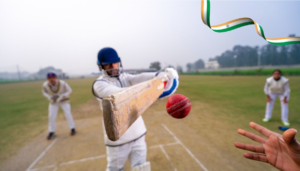
The Future of Cricket in India
How does the future look for the sport?
Growing Popularity of Other Sports
However, some sports are gaining popularity, especially among younger people. For instance, Badminton is currently the second most-played game in India. The total viewership of the Premier Badminton League stood at 155 million in 2019.
Kaddadi is another sport whose fame is surging. Originally from the Indian subcontinent, it has experienced a revival in the last few years. During the inaugural season of the Pro Kabaddi League in 2014, the sport attracted more than 400 million viewers. Football and field hockey are also emerging sports in India.
How Cricket is Adapting to Maintain Its Position
The country has yet to see comparable success in other sports besides cricket. Nevertheless, cricket remains the most popular sport in India today and will continue to maintain that position in the foreseeable future.
Role of Women’s Cricket in Expanding the Sport
The Indian female cricket team has been in existence since the 1970s. Three teams, Maharashtra, UP, and Mumbai participated in the first women’s Inter-State Nationals held in Pune in April 1973. The women in blue played their first test match against the West Indies in 1976. They had their first victory over the West Indies in 1976.
Key Achievements and their Influence on Aspiring Young Players
The English Cricket Board united with the Women’s Cricket Association in the late 90s. After that amalgamation, the Indian female team went to England and played excellently.
Some of the top Indian female cricketers in history include:
- Sudha Shah
- Diana Edulji
- Sandhya Agarwal
- Shanta Rangaswamy
Sandhya Agarwal made history by hitting 190 runs in an innings during a test match. At the same time, Shanta Rangaswamy was the first Indian female cricket player to score a century in international cricket.
Today, successful female cricketers are role models for girls in a male-dominated sport. They are breaking down stereotypes that sports are only for men and showing young girls that they can be heroes, too.

Evolving Formats and Technological Integration in Indian Cricket
Social media and video streaming platforms have taken Cricket beyond India, even to the most remote parts of the globe. Players and their coaches feel more connected, and fans can get insights into the lives and training routines of their favorite players.
Another transforming factor is the introduction of T20 cricket, a fast-paced form of the game. The electrifying nature of this competition has been a defining factor in sharpening the strategic and fast-scoring drive of the Indian t20 squad.
Thanks to television coverage and digital streaming, the Indian cricket industry has seen more sponsors, celebrity endorsements, and greater revenue. Players also always have the latest information on every player’s fitness level and real-time stats. New technologies like ball-tracking, Hawk-eye, and the Decision Review System (DRS) are instrumental in helping officials make technical decisions.
How Modern Formats Appeal to Younger Generations
The younger generation of cricket fans is more tech-savvy. Therefore, the modern evolution of the Cricket game appeals to them immensely. We will likely see fresh bouts of talent in the game, with a high viewership. More careers are also opening up in social media management, sports analytics, technical analysis, and journalism.

